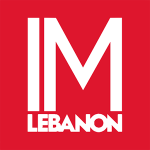The most compelling argument President Barack Obama made for the nuclear framework deal with Iran was also the simplest one: The pact, once concluded, would be preferable to any realistic alternative.
It’s not a perfect agreement, and certainly not a permanent solution to the threat an aggressive Iran poses for Israel and other nations in the Middle East. But the framework delivered more than many skeptics had feared. The problem is that the enervating bargaining will continue for another three months (at least) before the accord is final.
Obama defended the deal by invoking the early arms-control agreements with the Soviet Union, which had far more loopholes and potential dangers than the Iran pact. But those U.S.-Soviet accords, as Obama said, made our world safer.” From Switzerland, a sleep-deprived but determined Secretary of State John Kerry stressed that the agreement was better than the “unacceptable” status quo.
What’s worrisome is that this deal still isn’t done: There’s no final handshake. All the late-night sessions and threats to break off the talks weren’t enough to get Iran to commit formally to the terms the U.S. laid out in a meticulous, four-page list of “parameters” for a binding “joint comprehensive plan.” The Iranians instead postponed that signoff to another day, after the final, final negotiations.
One signal of the incompleteness of what was announced Thursday was the mismatch between the detail-rich U.S. fact sheet and the thin, page-and-a-half statement read jointly by European Union foreign policy chief Federica Mogherini and Iranian Foreign Minister Mohammad Javad Zarif. “We can now restart drafting the text and annexes [of the final agreement], guided by the solutions developed in these days,” the joint EU-Iranian document said. That hardly sounded like hitting the “done” button.
The key U.S. point of leverage, if I read these documents accurately, is that economic sanctions against Iran won’t be removed until the International Atomic Energy Agency, the United Nations’ nuclear watchdog, verifies “implementation by Iran of its key nuclear commitments” after the final deal is struck. Thus, it shouldn’t seem to be in Iran’s interest to stall.
A troubling aspect of the deal, in terms of leverage, is that once initial Iranian compliance is verified, all U.S. and U.N. economic and financial sanctions related to the nuclear issue would be lifted, and a new U.N. resolution would be drafted to guide future Iranian compliance. Yes, there’s a so-called “snap-back” provision that would allow sanctions to be re-imposed if Iran were found to be violating the agreement. But that’s a formula for a potential U.N. nightmare.
The U.S. had hoped for something more stringent: a calibrated reduction in sanctions, in which Iran would have to earn each additional concession. That was seen as a constraint on Iranian behavior, and it was repeatedly stressed by Kerry to the Iranians. It’s hard to be sure, because information is still fragmentary, but the U.S. seems to have softened its terms on this key issue. That’s worrisome.
The tentative terms of the deal, as described in the American “parameters” memo, actually exceed what many had thought possible. The Iranians would be allowed to operate 5,060 centrifuges for the next 10 years, rather than the 6,000 or 6,500 that earlier leaks had suggested. For 15 years, enrichment would be banned at the hardened, underground facility at Fordow, longer than some had expected. The Iranians could enrich some uranium at Natanz, but only to the 3.67 percent level, vastly below weapons grade, and the stockpile of enriched material would be capped at 300 kilograms for 15 years.
Iranian research (or at least the fruits of it) would also be capped. About 1,000 advanced IR-2 centrifuges would be removed from Natanz, and no other advanced centrifuges could enrich uranium anywhere for at least 10 years. A heavy-water reactor at Arak would be reconfigured so it couldn’t produce bomb fuel.
Perhaps the most important part of the framework involves inspection and verification plans. Here, too, the U.S. seems to have obtained most of what it wanted. The IAEA could permanently monitor all of Iran’s nuclear facilities, using an intrusive measure known as the “additional protocol.” Inspection of Iran’s mines, mills and other elements of its nuclear supply chain would continue for 25 years. It’s a tougher package, in terms of preventing Iranian breakout, than many critics feared.
Zarif’s characterization of the deal was far different from Kerry’s or Obama’s. But such spin-doctoring is to be expected in any negotiation. This looks like a pretty good deal. I just wish it were signed.
